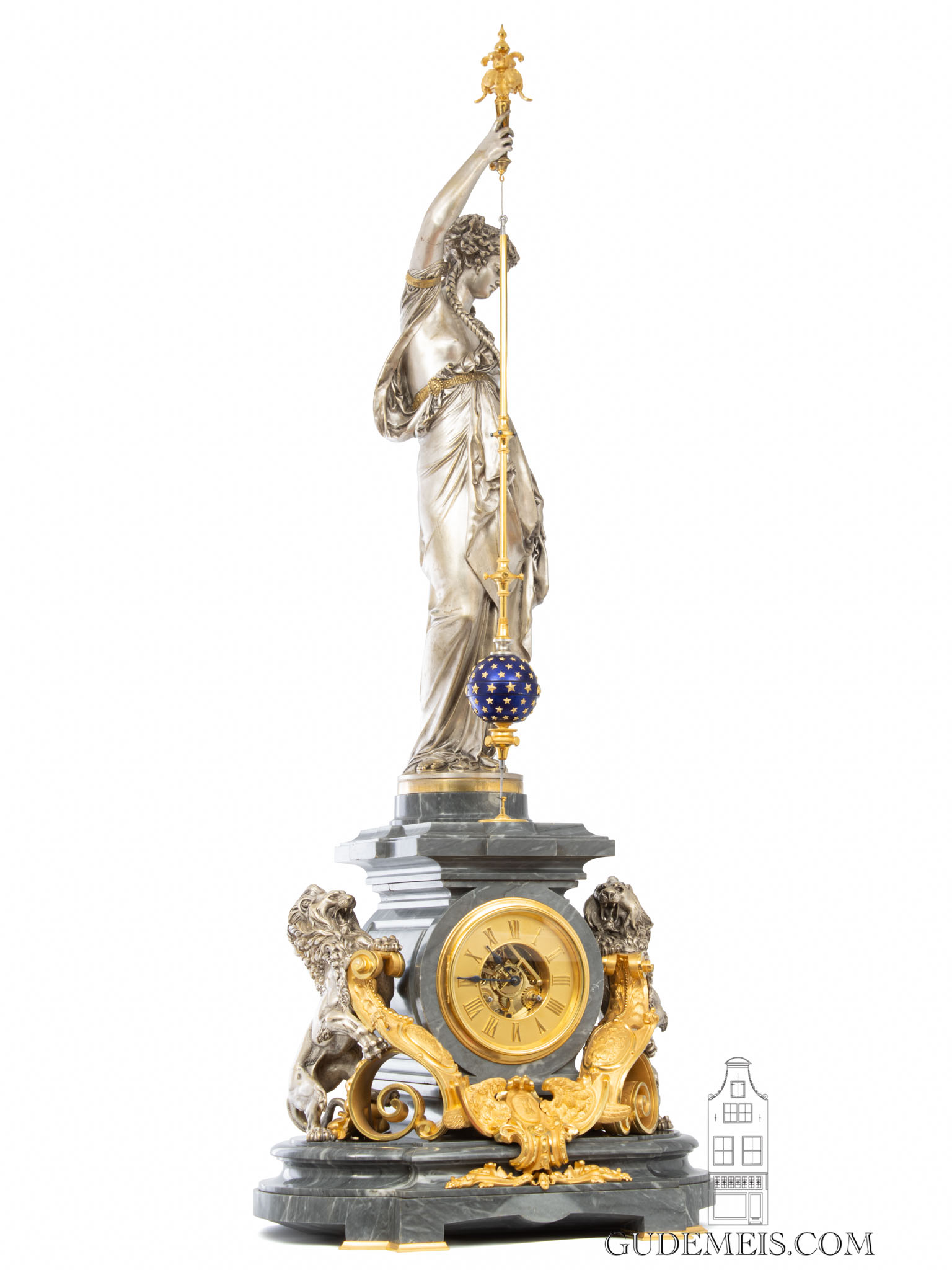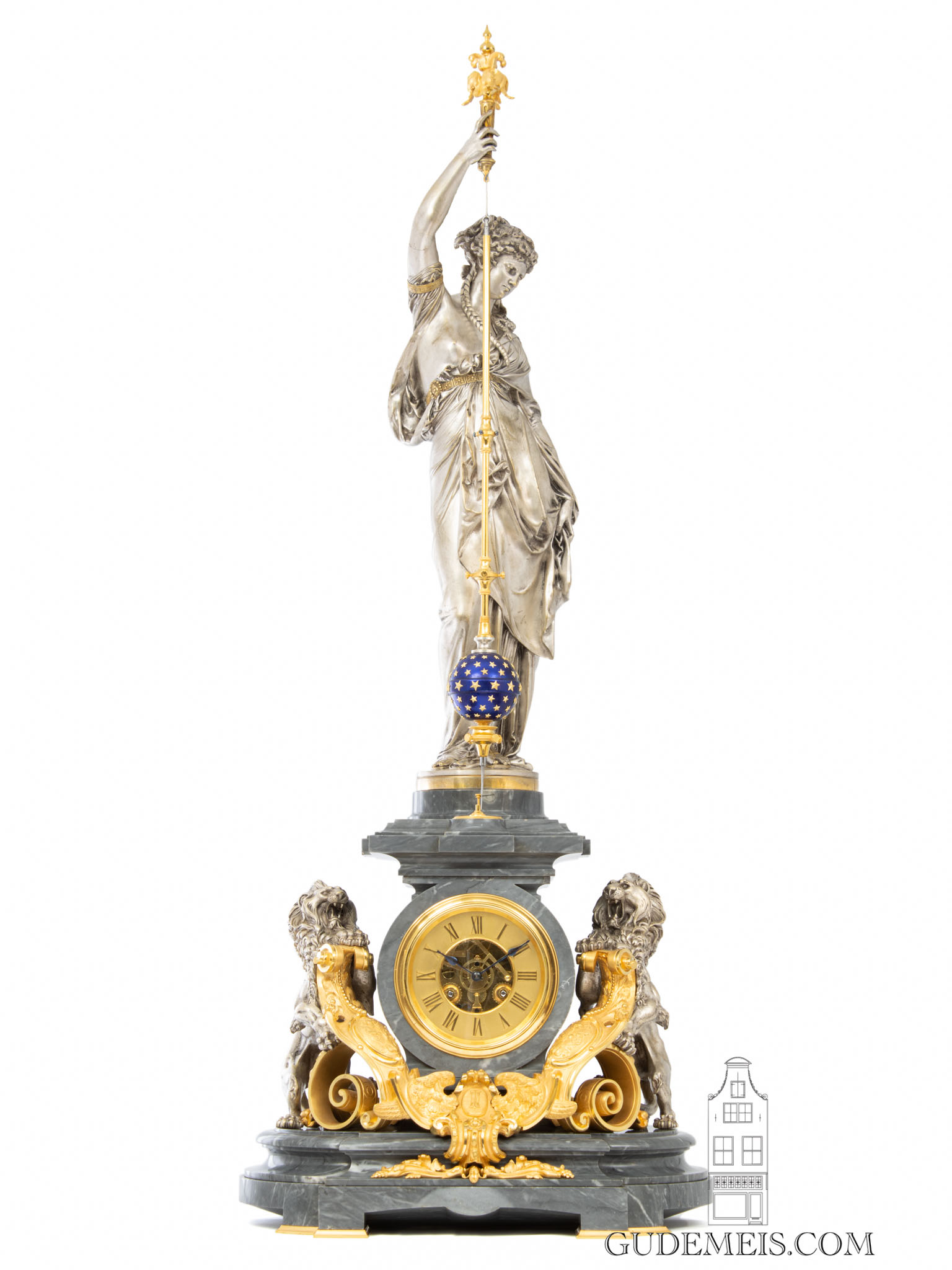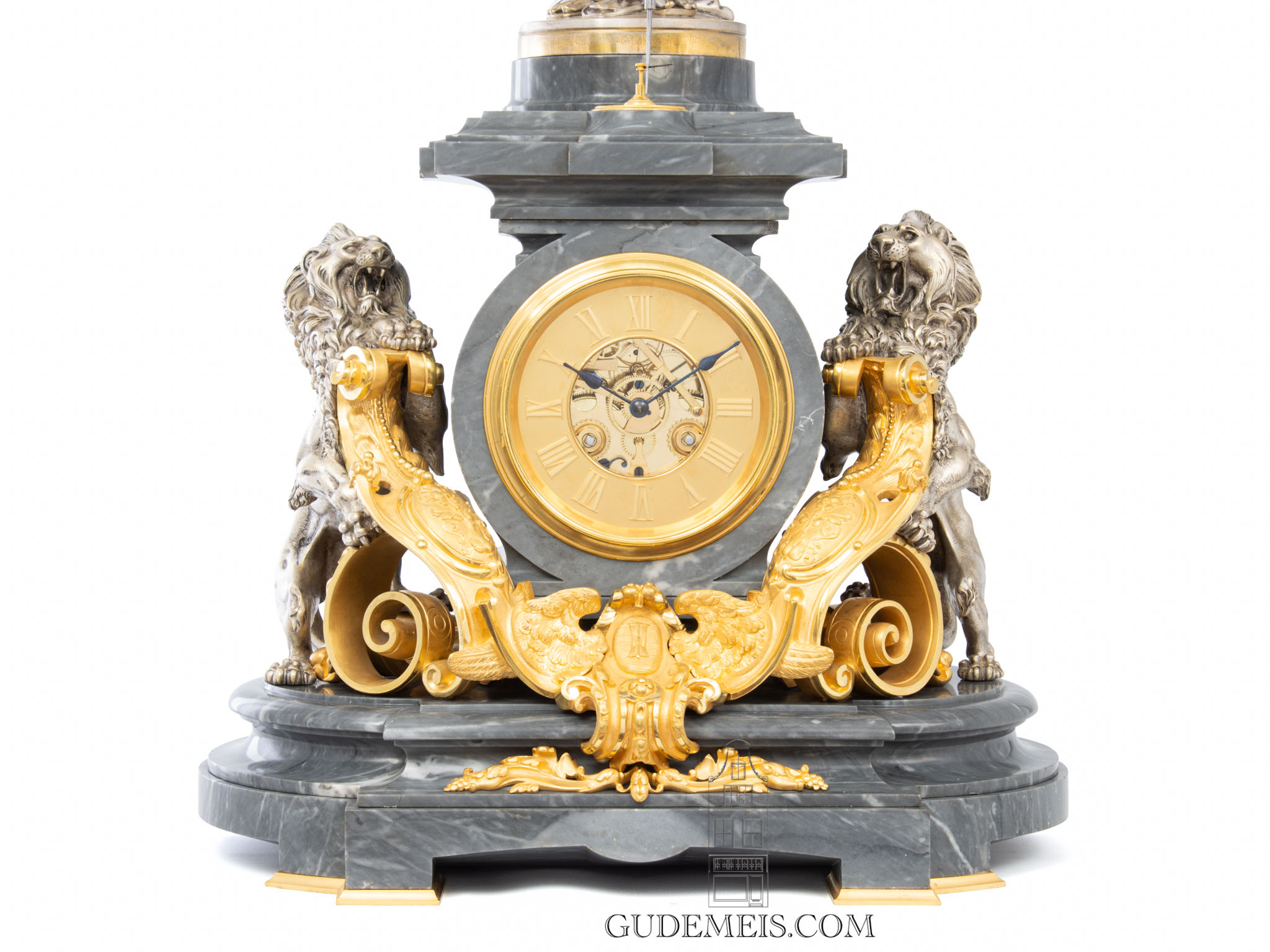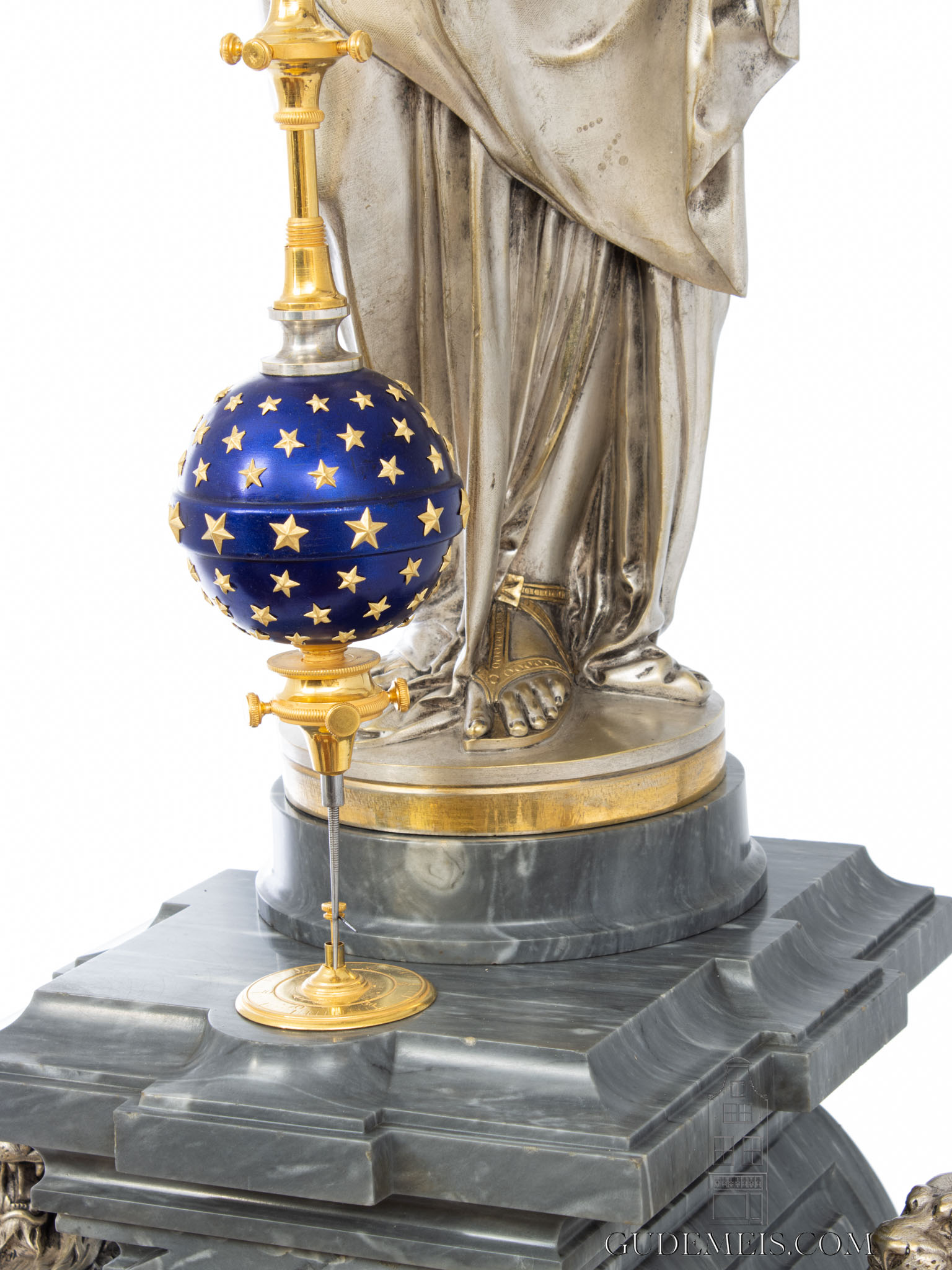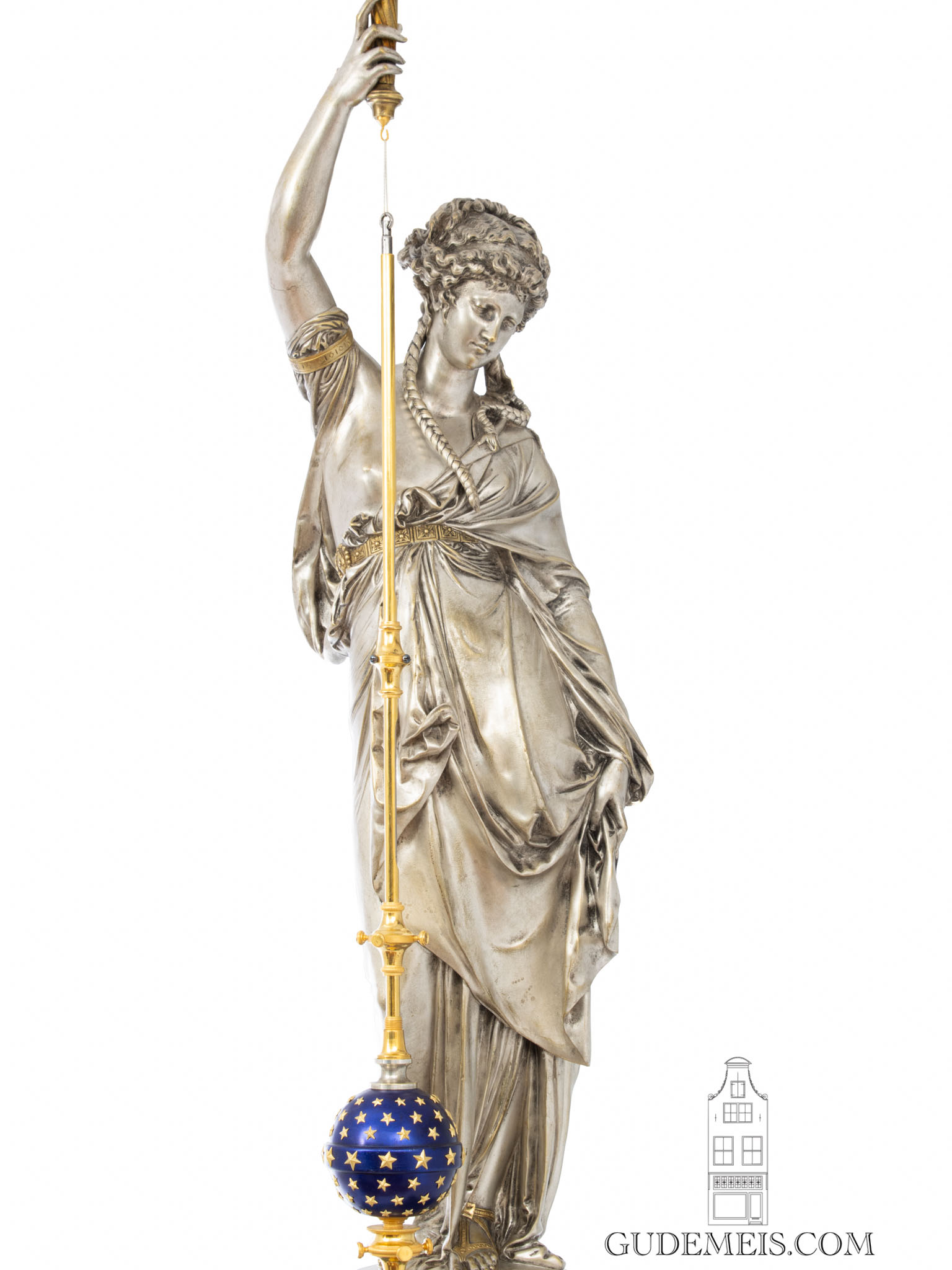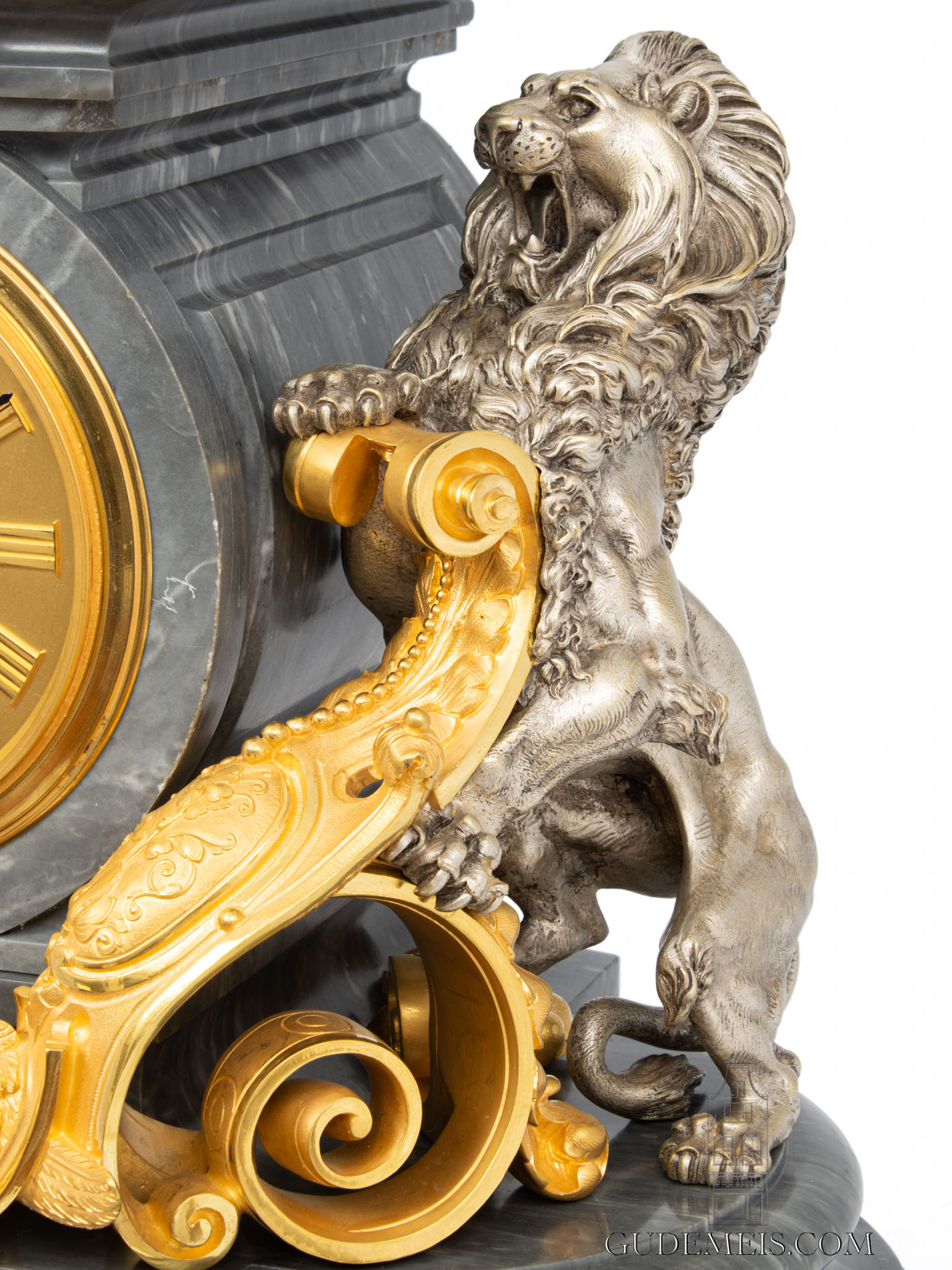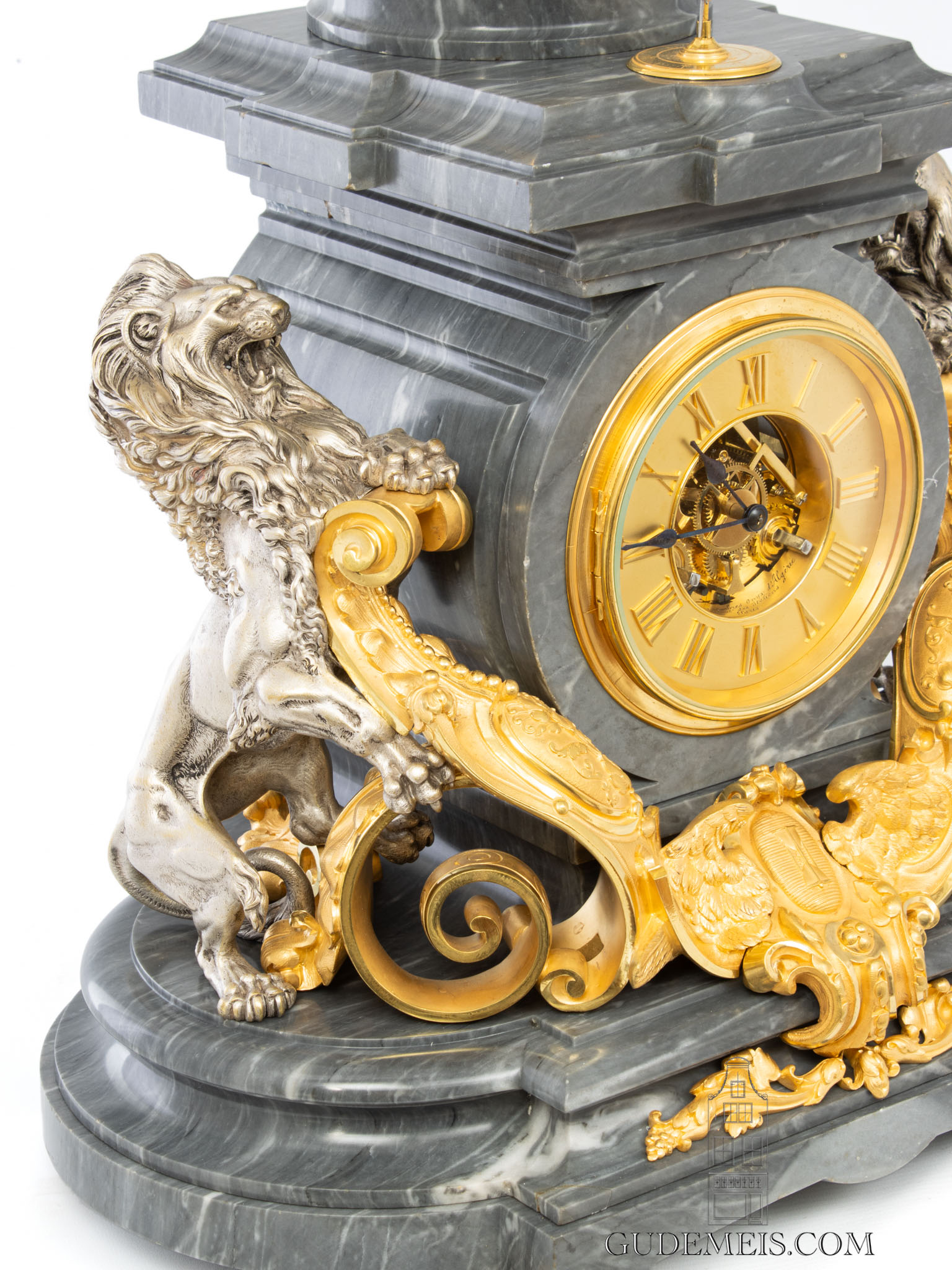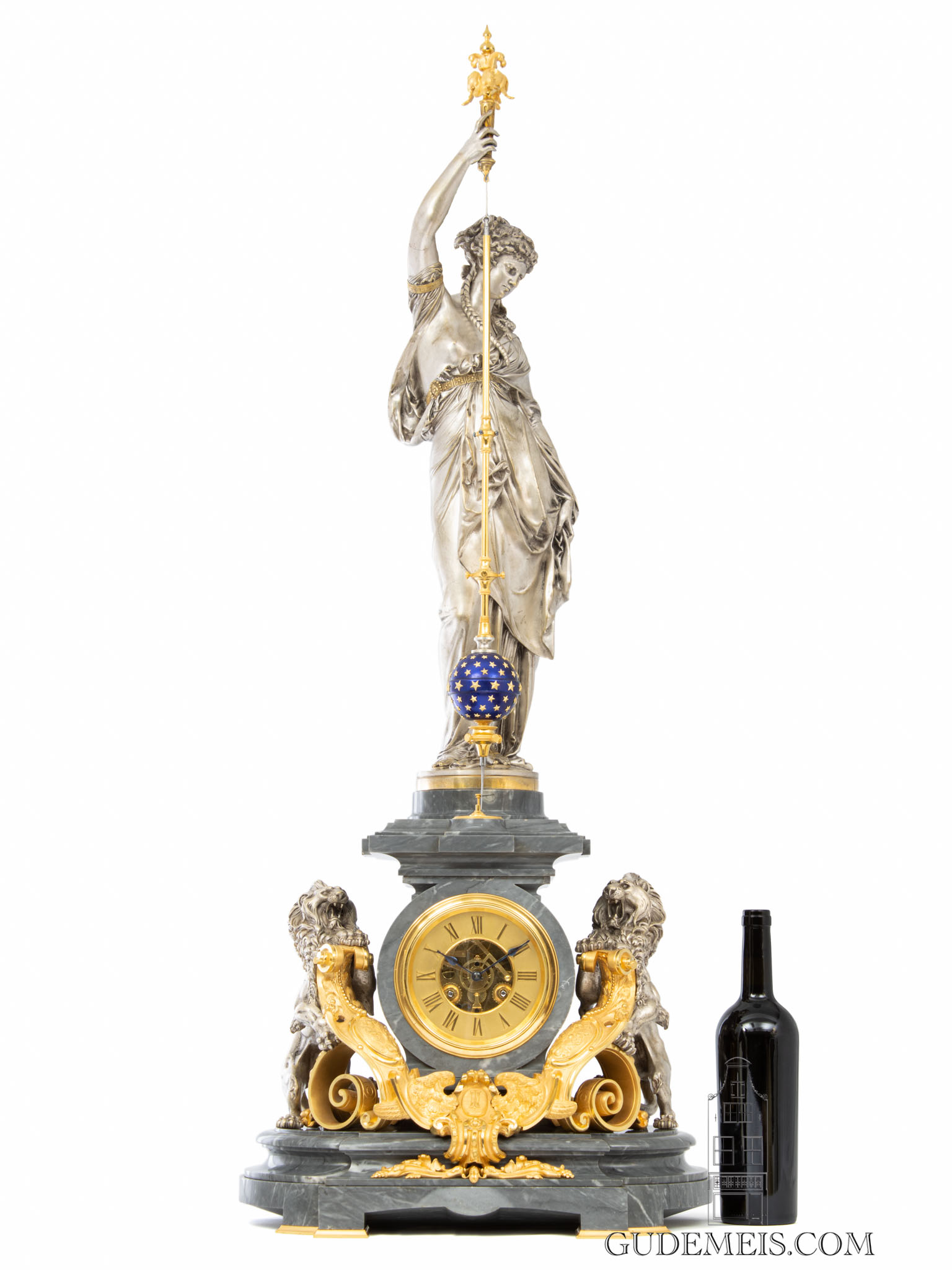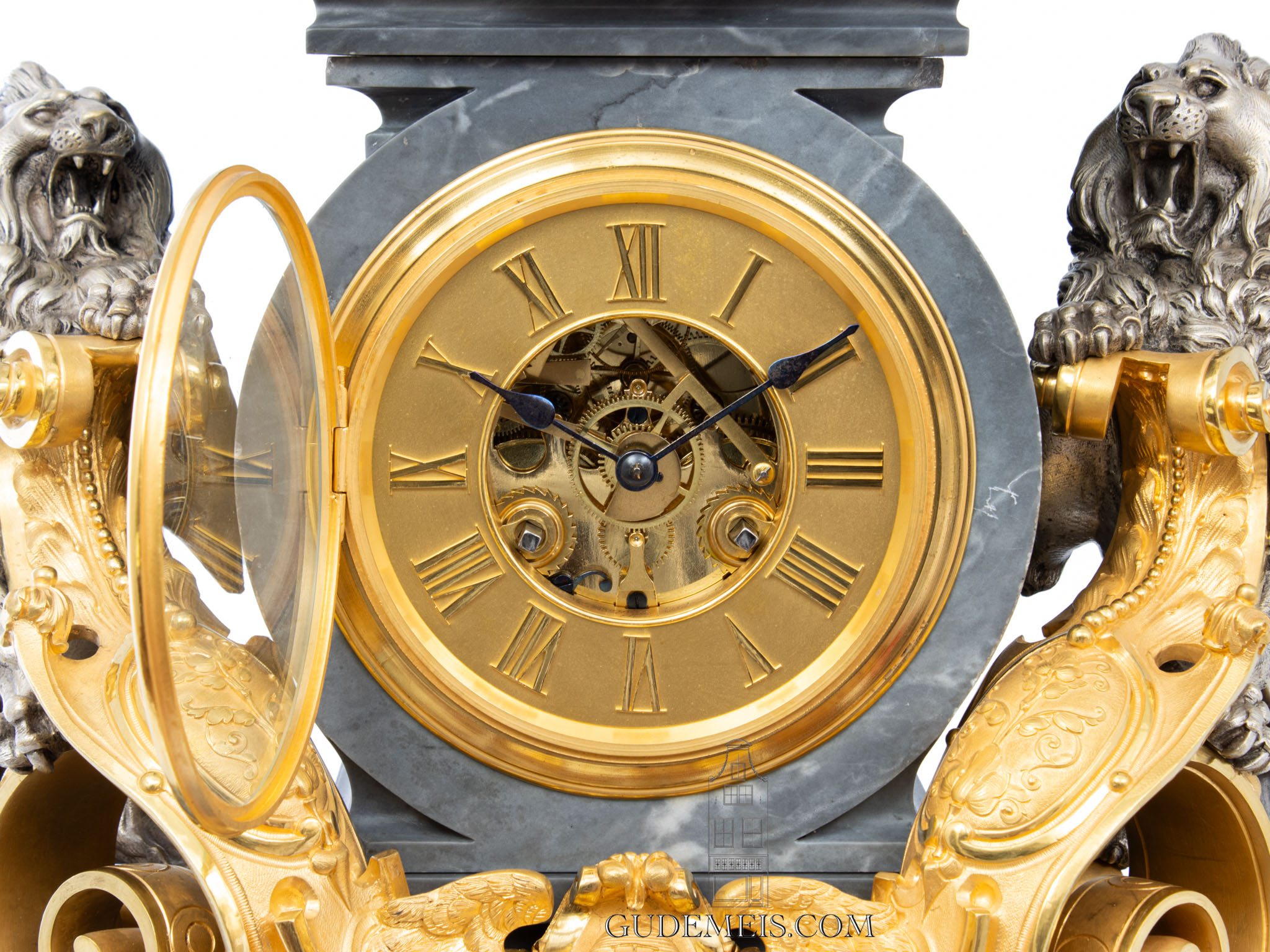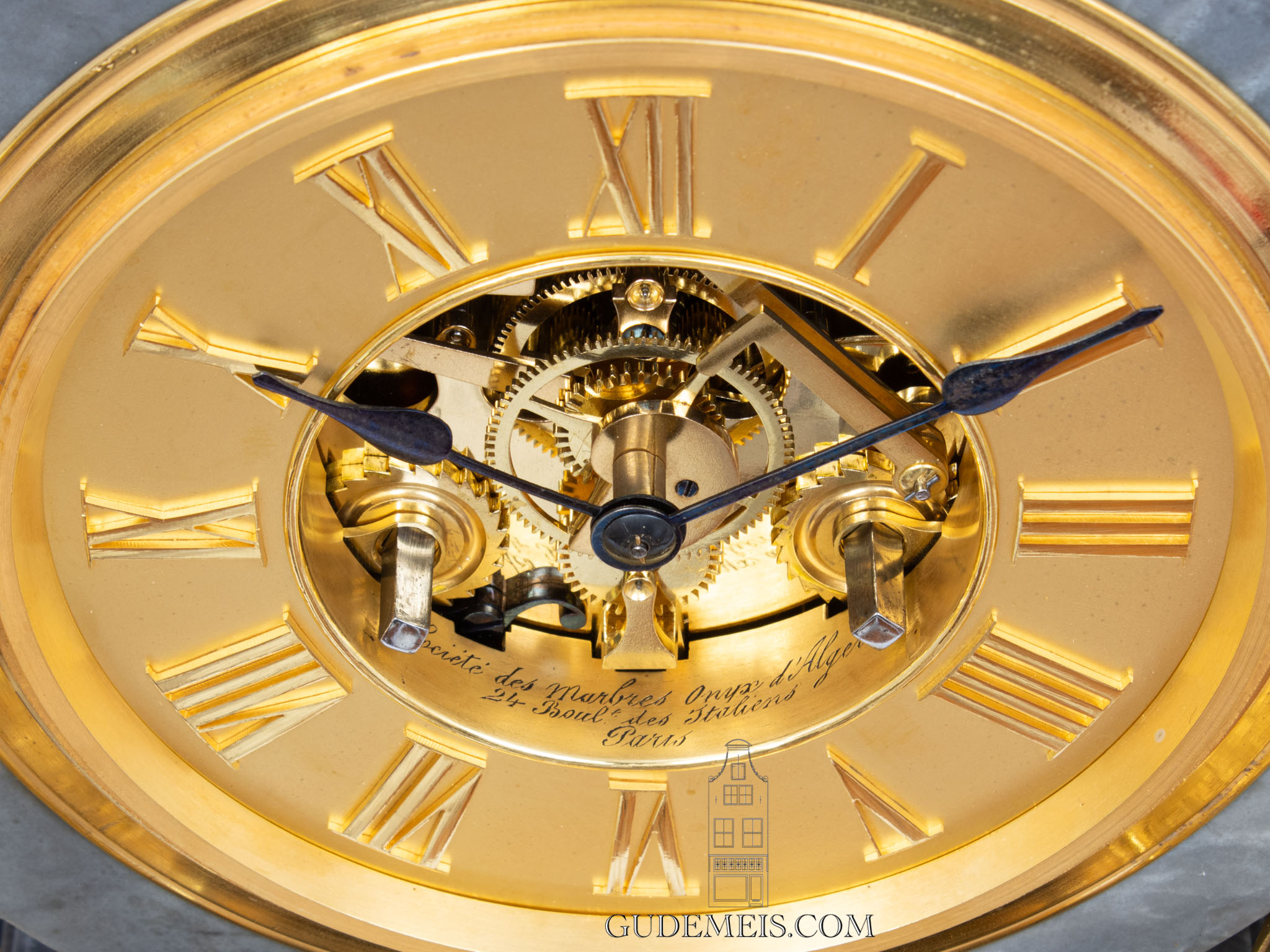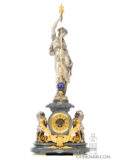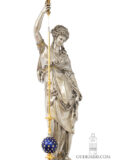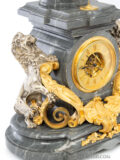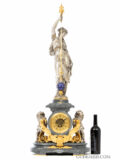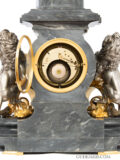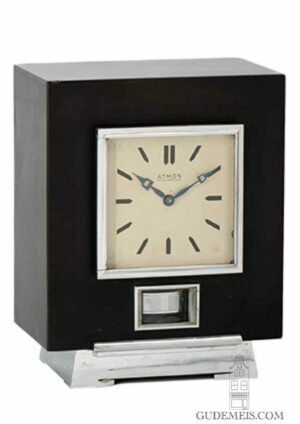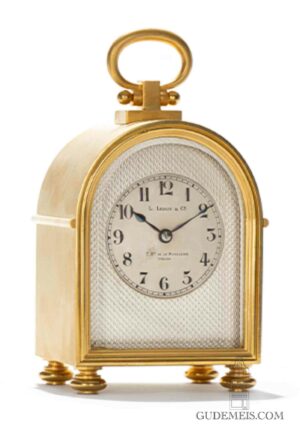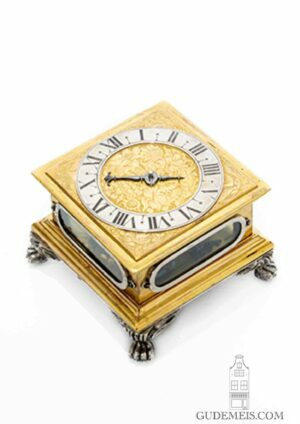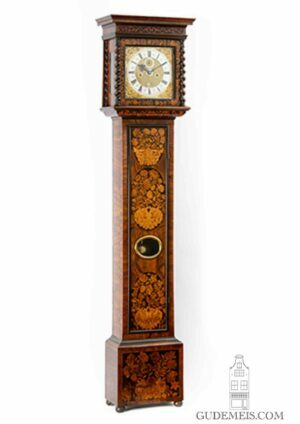A magnificent French sculptural mantel clock with conical pendulum, Farcot and Carrier-Belleuse, circa 1870.
Description
Conical pendulum
The term ‘conical pendulum’ refers to pendulums that have a continuous circular motion and require no escapement. This contrary to pendulums that swing from side to side. The name is is based on the silhouette of the pendulum’s motion which looks like a cone. Although the concept of a conical pendulum was already known in the 17th Century, it was always deemed unreliable because the lacking of an escapement. But in the middle of the 19th Century a few clockmakers succeeded in producing a good functioning movement with a conical pendulum. A great scource of inspiration was Foucault who installed in 1851 his famous pendulum in the Panthéon in Paris. The English clockmaker Balliman made a conical pendulum clock in 1855 but was met with both praise and scepsis. But when the famous Antoine Redier exhibited a precision clock at the 1860 Besançon Exhibition he proved that it was possible to make a well functioning timekeeper with a conical pendulum. Henry-Eugène Farcot saw the commercial potential of the conical pendulum when it would be held up by a sculpture. In 1862 he introduced these sculptural clocks at the Exhibition in London. In partnership with the renown ‘Société des marbres Onyx d’Algerie’ and the sculptor Albert-Ernest Carrier-Belleuse a number of beautiful mantel clocks were made of which this is one.
Société des Marbres Onyx d’Algerie
The 12.5-cm gilt chapter ring has applied Roman numerals. The hands are made of blued steel. The movement which is partly skeletonized is nicely visible through the open centre. The bezel around the centre is signed ‘Sociètè des Marbres Onyx d’Algerie 24 Boul d des Italiens Paris.
Callibre 3
The movement is driven by two spring barrels and has a duration of at least eight days. The clock has half hour striking on a bell by means of rack striking. The back plate has several inscriptions. There is a trade mark surmounted by a bird inscribed ‘medaille de bronze’ and below ‘brevete’ 53701. Behind the bell the is a beautifully engraved capital ‘F’ for Farcot. At the bottom edge there is the inscription Cal 3 (callibre 3) No.9.
Carrier-Belleuse
The movement is fitted in a bleu de turquin marble case which is flanked by beautifully made silvered bronze lions with gilt armorial shields and a drape. On this case there is a finely cast and chiseled silvered bronze sculpture of a classical lady personifying ‘Urania’. This sculpture can be attributed to the sculptor Albert-Ernest Carrier-Belleuse (1824-1887) who was also a teacher of Rodin. The whole is on an oval moulded plinth raised on flat gilt brass feet.
Henry-Eugène-Adrien (Eugène) Farcot (1830-1896)
In 1853 Henry-Eugène-Adrien Farcot started his ‘Manufacture d’horlogerie E. Farcot’ in the Rue Vielle Temple. He moved to the Rue Trois Bornes in 1855 where he would remain working until his retirement around 1890. He was an accomplished maker that registered sixteen patents in the field of horology. He also won several awards at grand exhibitions among others in Paris and London. His son-in-law Charles Wandenberg (Vandenberg) became his business partner in 1887.
